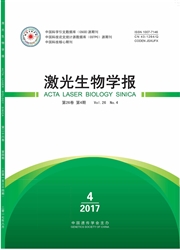

 中文摘要:
中文摘要:
具有核苷酸结合位点(nucleotidebindingsite,NBS)的抗病基因在植物抵抗各种病原菌侵染中起关键作用。对玉米全基因组中具有NBS结构的基因进行鉴定和分析,并结合水稻、高粱、拟南芥、百脉根、苜蓿和杨树的NBS类基因比较其在数量、复制、染色体定位和亲缘关系上的进化差异。发现玉米NBS类基因数量、复制数和成簇基因数均明显少于其他植物。低复制频率可能导致玉米NBS类基因较少,并推测可能导致其功能具有多样性。在基因染色体定位上,除高梁外,玉米与其他五种植物相似,呈不均衡分布。此外,进化树分析表明玉米NBS类基因与高粱的亲缘关系最近,与拟南芥的最远,在物种问表现出较高的保守性。结果对揭示玉米NBS基因的进化特点与发掘有益的NBS类抗病基因提供了重要的理论依据。
 英文摘要:
英文摘要:
Nucleotide-binding site (NBS) disease resistance genes are prevalent in plant and play integral roles in de- fending plants from a range of pathogens. By using bioinformatics approach, a full set of disease resistance candidate genes encoding NBS from the complete genome of maize was identified and characterized based on the analysis of gene structural diversity, chromosomal locations, gene duplications and phylogenetic relationships. By comparing maize NBS- encoding genes with those of rice, sorghum, Arabidopsis, Lotus japonicus, Medicago and poplar, the chromosomal locali- zation of maize NBS genes of maize was found similar to those of rice, Arabidopsis, Lotus japonicus, Medicago and poplar that showed uneven distribution, while that of sorghum was found mainly distributed at the ends of chromosomes. Analy- ses of the physical locations and duplications of maize NBS-encoding genes revealed that gene duplication events was low- er in maize than in other plants, which may have led to an increase in the functional diversity of the maize NBS-encoding genes. Based on phylogenetic analysis of NBS-encoding genes of maize and other four plants, the phylogenetic relation- ships of NBS-encoding genes in maize were found to be closest to sorghum and furthest to Arabidopsis, showing highlyconserved relationships among the plant species. An improved understanding of the NBS-encoding gene family in maize was achieved by our results.
 同期刊论文项目
同期刊论文项目
 同项目期刊论文
同项目期刊论文
 期刊信息
期刊信息
